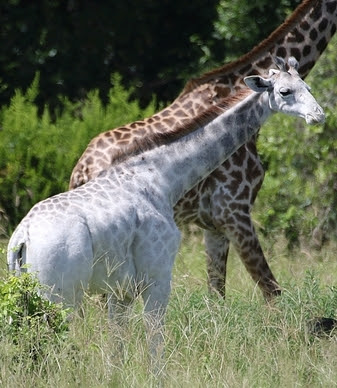RARE WHITE GIRAFFE SPOTTED IN TANZANIA
An ecologist has spotted a rare white giraffe calf in Tarangire National Park, in northern Kenya. The calf was photographed by ecologist Derek Lee, from New Hampshire’s Wild Nature Institute. A local guide nicknamed the giraffe Omo, after a local type of whitish laundry detergent of the same name. It is now more than 1 year old, which is a good sign for its future well-being: Only about half of giraffes survive their first year, Lee tells CNN, and those that do can live to 25 years of age or longer.
Nevertheless, the animal is at an increased risk in the future compared to other giraffes, as its white coloration probably makes it more visible to predators like lions, as well as human hunters. Giraffes are routinely killed for their hides and meat, which is sought after in the bushmeat trade. This poaching appears to be on the rise, as giraffe populations on the African continent have declined by 40 percent in the last 15 years.
Though the sighting was first reported by Wild Nature Institute in 2015, Omo is back in the news after the Institute blogged about the animal earlier this month.
The animal is not albino, but has a similar condition called leucism, in which the skin lacks various pigments and appears white. While albinos eyes are red, leucistics have normal eye coloration. Leucism has been seen in many types of animals, including reptiles, birds, mammals and even fish like sharks; an all-white, leucistic great white shark pup recently washed up in Australia.




Comments
Post a Comment